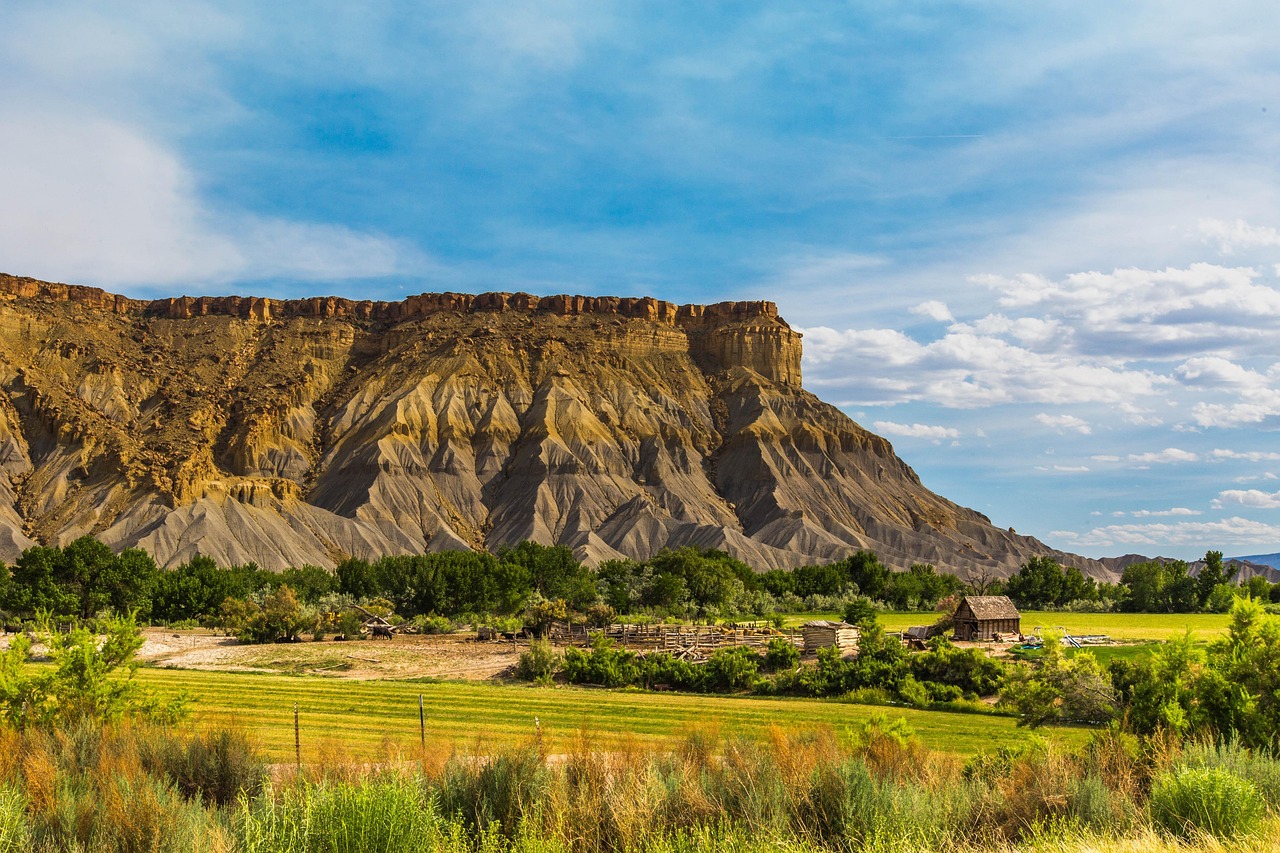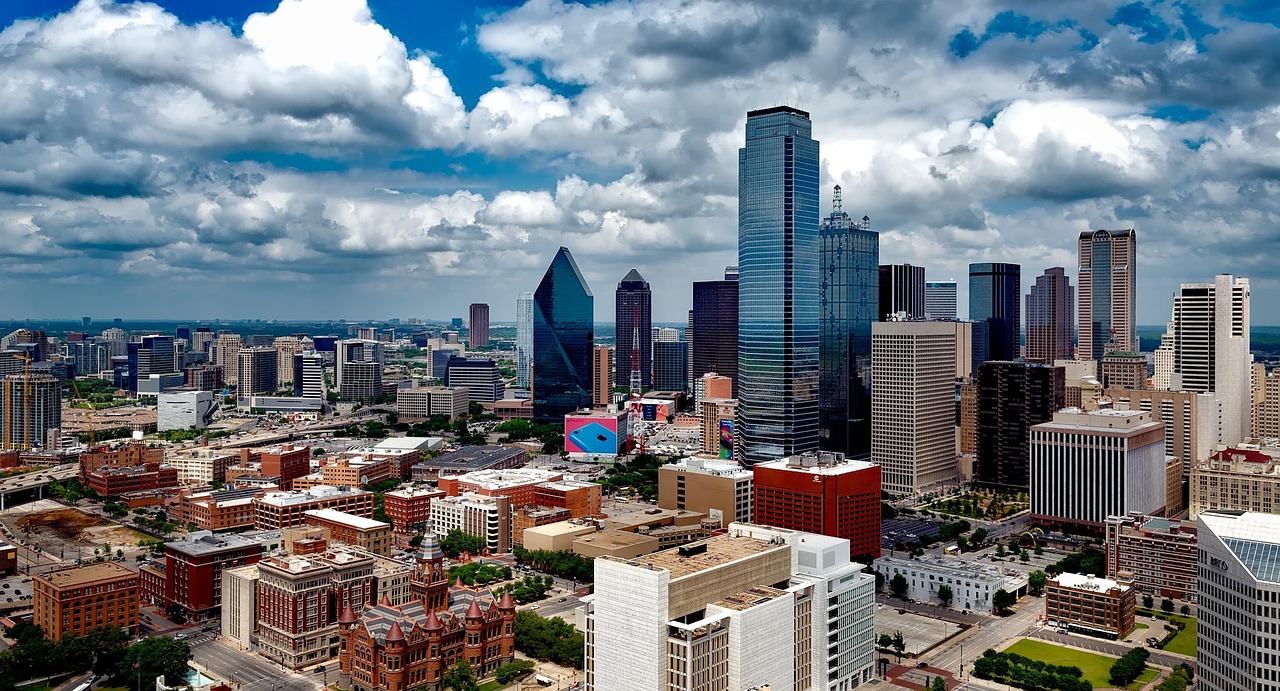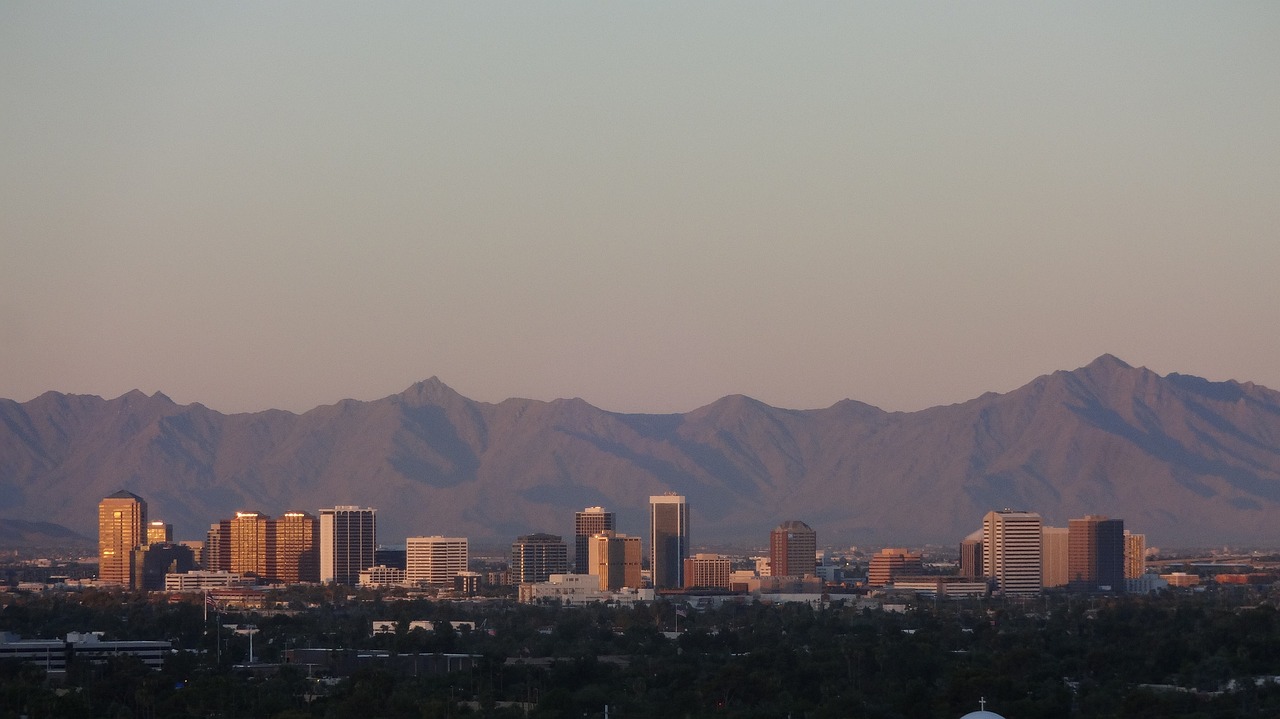Planning a vacation can be tough, especially when you want something unique. Capitol Reef National Park is a hidden gem in Utah. This blog will show why it’s the perfect spot for your next trip.
Get ready for adventure!
Key Takeaways
- Capitol Reef National Park has a unique feature called the Waterpocket Fold, which is almost 100 miles long. It forms cliffs, canyons, and arches in red sandstone.
- The park has dark sky recognition, making it great for stargazing and night photography because of minimal light pollution.
- There are many activities like hiking, scenic drives, camping, and canyoneering. Trails range from easy to challenging.
- Capitol Reef’s history includes Native American petroglyphs and Mormon settlements like the Fruita community.
- Spring and fall are the best times to visit due to mild weather. Summer gets very hot, while winter may have snow on trails.
Geography and Geology

Capitol Reef National Park showcases the striking Waterpocket Fold, a unique geological feature stretching for nearly 100 miles through the park. The area offers stunning red and white rock formations, creating a visually captivating landscape that’s perfect for exploration and discovery.
The Waterpocket Fold
The Waterpocket Fold is a huge wrinkle on the earth’s surface. It stretches almost 100 miles through Capitol Reef National Park. This feature forms cliffs, canyons, and arches in red sandstone.
It’s like nature’s own artwork.
Years of erosion have shaped this rugged landscape. Each layer of rock tells a story that goes back millions of years. Visitors can see colors change with the daylight. The Fold makes Capitol Reef unique in Utah’s red rock country.
Next, let’s explore the park’s unique red and white rock formations.
Unique red and white rock formations
Capitol Reef National Park dazzles with its red and white rock formations. These rocks aren’t just any stones; they’re layers of history painted across Utah’s landscape. Imagine cliffs, canyons, and domes that shine under the sun, showing off colors you’ve got to see to believe.
This place looks like a scene from another planet.
Artists and photographers flock here to capture its beauty. Every corner offers a new view, making it a haven for those who love scenic views. Whether you’re hiking or driving through, these formations create a backdrop that feels almost magical.
It’s nature’s own art gallery, open all year round for anyone ready to explore.
History of Capitol Reef National Park
Capitol Reef National Park holds a significant history, reflecting the presence of Native American heritage and the establishment of Mormon settlements. The park’s transition to national park status further enriches its historical tapestry, making it a captivating destination for history enthusiasts.
Native American heritage
Long before it was called Capitol Reef National Park, Native Americans lived on this land. The Fremont people were here from about 300 to 1300 AD. They left behind rock art, or petroglyphs, which you can still see today.
These drawings tell stories of their lives and beliefs.
Later, the Paiute tribe came to the area. They hunted and gathered here until the late 1800s. Both tribes used the natural resources of Capitol Reef for food, shelter, and tools. Their connection to this land is a big part of its history.
You can learn about their ways of life by visiting the park.
Mormon settlements
Mormon settlers arrived in the Capitol Reef area in the late 19th century, naming it “Capitol” for its white dome formations resembling capitol buildings and “Reef” for the difficult-to-traverse ridges.
They established a community called Fruita, cultivating fruit orchards which still thrive today, with visitors allowed to pick fruits in season. The remnants of their stone houses and barns dot the landscape, offering a glimpse into their pioneer lives among sandstone cliffs.
This historical settlement adds a unique charm to the park experience while providing insight into early Utah life. It’s an opportunity to appreciate how these settlers carved out an existence from this seemingly harsh environment.
The vestiges of their hard work can be seen throughout the park, adding richness to your visit and showcasing the resilience required for frontier life.
Moving forward to activities within Capitol Reef National Park…
Transition to national park status
Upon the arrival of additional settlers and an exponential growth in tourism, Capitol Reef National Monument was expanded and redesignated as Capitol Reef National Park in 1971. This new status offered increased protection for the area’s unique geological formations, diverse wildlife, and cultural history.
It opened up opportunities for enhanced visitor experiences with improved facilities, ranger-led programs, research initiatives, and conservation efforts. The change to national park status also brought heightened attention to the need for sustainable management practices and preservation of this remarkable landscape.
This transition symbolized a significant milestone in the ongoing effort to safeguard Utah’s natural treasures while providing visitors with enriching experiences that showcase the state’s captivating blend of red rock canyons, historic sites, and outdoor recreational opportunities within a protected environment.
Activities in Capitol Reef National Park
Explore a variety of hiking and backpacking trails that wind through the park’s striking red rock landscapes. Take in the sweeping views and unique geological formations while enjoying scenic auto tours or challenging yourself with camping and canyoneering experiences.
Hiking and backpacking
Capitol Reef National Park offers a variety of hiking and backpacking options, allowing visitors to explore the park’s stunning landscapes. Here are the activities to enjoy:
- Traverse the Hickman Bridge Trail, a moderate hike with breathtaking views of a natural bridge formed by erosion.
- Discover the scenic Cohab Canyon Trail, offering an immersive experience through diverse terrain and fascinating geological formations.
- Embark on the Capitol Gorge Trail, an easy hike featuring historic inscriptions left by early travelers and unique rock formations.
- Explore Sulphur Creek, a challenging route that leads through a narrow canyon with opportunities for wading and water hiking amidst striking scenery.
- Experience the challenging but rewarding Halls Creek Narrows Backcountry route, weaving through rugged wilderness with spectacular vistas.
These hikes provide diverse experiences for hikers of various skill levels, showcasing the natural beauty of Capitol Reef National Park.
Scenic auto touring
Take a drive on the scenic Capitol Reef Scenic Drive, a 25-mile road that winds through the park’s magnificent landscapes. Along this route, you’ll be treated to breathtaking views of towering cliffs, colorful rock formations, and sweeping vistas of the Waterpocket Fold.
Keep your camera handy for photo opportunities at Panorama Point and Sunset Point. The drive offers plenty of pull-offs where you can stop and soak in the unique scenery. It’s an excellent way to experience the park’s natural beauty from the comfort of your car.
Capitol Reef Scenic Drive spans from Highway 24 to Capitol Gorge, providing a leisurely exploration opportunity for travelers who want to witness some of nature’s finest works without venturing far from their vehicles.
The road is easily accessible, making it suitable for families with children or elderly visitors looking for a relaxed yet captivating adventure amidst Utah’s stunning red rock country.
Camping and canyoneering
Capitol Reef National Park offers various opportunities for camping and canyoneering, allowing visitors to immerse themselves in the park’s stunning natural beauty.
- There are three campgrounds available at Capitol Reef, offering different amenities and accommodations for both tent and RV camping.
- Canyoneering enthusiasts can explore the park’s slot canyons, such as the famous Sulphur Creek route, providing a thrilling and immersive experience.
- Guided canyoneering tours are also available for those looking for expert-led adventures, ensuring a safe and educational experience in the park’s rugged terrain.
- Visitors must adhere to Leave No Trace principles when camping and canyoneering to preserve the park’s delicate ecosystem and minimize environmental impact.
- It’s essential to obtain any necessary permits and information from the visitor center before engaging in backcountry activities to ensure a safe and enjoyable experience.
Dark Sky Park Recognition
Capitol Reef National Park boasts Dark Sky Park Recognition, offering outstanding stargazing opportunities and night photography. Learn how the park’s designation enhances your nighttime experience.
Stargazing opportunities
Capitol Reef National Park is a designated Dark Sky Park, making it an ideal spot for stargazing. Here, visitors can enjoy the serene beauty of the night sky and witness countless stars twinkling above.
With minimal light pollution, the park offers excellent conditions for observing celestial bodies such as planets, constellations, and even meteor showers.
The park regularly hosts night photography events and astronomy programs led by knowledgeable guides who share interesting facts about the stars and galaxies visible from this pristine location.
Visitors are encouraged to bring their cameras or simply recline on a blanket to take in the breathtaking starry spectacle at Capitol Reef National Park.
Night photography
After enjoying the stargazing opportunities in Capitol Reef National Park, don’t miss out on capturing the stunning night sky through photography. With its Dark Sky Park recognition, the park offers exceptional conditions for capturing mesmerizing shots of stars and celestial bodies against the unique red and white rock formations.
The absence of light pollution makes it an ideal spot for astrophotography enthusiasts to set up a camera and capture breathtaking long exposures of the Milky Way stretching across the desert sky.
Utilize a tripod to steady your camera and experiment with different exposure settings to achieve striking images of constellations, shooting stars, and the natural beauty of Capitol Reef under the blanket of night.
Don’t forget to pack warm clothing and sturdy footwear as you venture into this otherworldly landscape after dark for an unforgettable photography experience unmatched by many other national parks.
Best Times to Visit Capitol Reef
The best times to visit Capitol Reef are in spring and fall when the weather is pleasant, and the park’s natural beauty is at its peak. Check out our blog for more tips on planning your trip!
Seasonal highlights
Capitol Reef National Park experiences peak visitation during the spring and fall seasons, when temperatures are mild, flowers bloom, and fruit trees in the historic Fruita orchards blossom.
Spring is ideal for hiking amidst colorful blooms and moderate weather. Fall offers breathtaking foliage with vibrant reds and golds against the sandstone cliffs. The summer months can be scorching, but it’s perfect for star-gazing due to clear night skies.
Winter brings solitude as crowds thin out; however, snow can make some trails inaccessible.
During spring and fall at Capitol Reef National Park, temperatures are pleasant for outdoor activities like hiking amidst blooming flowers or enjoying vibrant foliage against the sandstone cliffs.
Summer presents prime opportunities for stargazing under clear night skies, while winter offers tranquility with fewer visitors although some trails may be affected by snowfall.
Weather considerations
Capitol Reef National Park experiences hot summers with temperatures often reaching over 100°F, and cold winters with snowfall. Spring and fall offer milder weather for outdoor activities.
Rain is infrequent in this desert climate, so visitors should bring plenty of water to stay hydrated during their explorations. It’s wise to check the weather forecast before visiting, especially in summer when thunderstorms can suddenly arise, creating flash flood risks in narrow canyons.
The park’s elevation varies widely from around 3,000 feet to over 8,000 feet at its highest point on Thousand Lake Mountain. This means that temperatures can differ dramatically within the park.
Visitors should pack layers for temperature fluctuations between day and night as well as different parts of the park. Always be prepared for sudden changes in weather conditions while exploring Capitol Reef National Park.
Tips for Visiting
When visiting Capitol Reef National Park, consider renting a car to have easy access to different parts of the park and explore at your own pace. To learn more about making the most of your visit, continue reading our blog!
Accessibility and transportation
Capitol Reef National Park is accessible by car and can be reached via Utah State Route 24. The nearest major airport is Salt Lake City International Airport, approximately a 3.5-hour drive away from the park’s entrance.
Within the park, a scenic driving route provides easy access to notable viewpoints and trailheads for hiking adventures amongst stunning red rock formations.
Visitors with mobility challenges may find some trails in Capitol Reef National Park to be rugged and uneven. However, the visitor center and some of the paved pathways are wheelchair accessible, providing opportunities for everyone to experience the park’s natural beauty.
Additionally, shuttle services are not available within the park, so personal vehicles are necessary for transportation between attractions and activities.
Dog-friendly areas
Capitol Reef National Park welcomes leashed dogs on roads, in campgrounds, and to the park’s developed areas. However, pets are not allowed on trails or in the backcountry. It’s important to keep dogs restrained at all times for their safety and the comfort of other visitors.
While it might limit where your furry friend can roam, many pet-friendly accommodations and outdoor spaces surround Capitol Reef National Park.
Visitors can bring their four-legged companions to nearby attractions such as Grand Staircase-Escalante National Monument and Manti-La Sal National Forest where they have more freedom to explore together in a beautiful natural setting while adhering to local regulations.
Nearby Accommodations and Dining
Capitol Reef offers various nearby accommodations ranging from cozy lodges to rustic resorts, and scrumptious local dining experiences for visitors to relish. Read more on our blog to discover the perfect place to stay and dine during your visit!
Resorts and lodges
Capitol Reef National Park offers a range of lodging options nearby, including the Capitol Reef Resort and The Lodge at Red River Ranch. These accommodations provide comfortable stay experiences with easy access to the park’s attractions, making them ideal for visitors looking for convenience and comfort during their exploration of this stunning natural area.
Both resorts offer amenities like outdoor swimming pools and on-site dining, allowing guests to relax and refuel after a day of adventure in the rugged beauty of Capitol Reef.
These lodges are situated within close proximity to scenic drives, hiking trails, and iconic rock formations, providing an excellent base for travelers eager to immerse themselves in the captivating landscape of red cliffs and canyons.
Whether you’re seeking a luxurious retreat or a cozy place to rest amidst nature’s splendor, these lodges cater to various preferences while ensuring convenient access to the marvels of Capitol Reef National Park.
Local dining experiences
Capitol Reef National Park offers local dining experiences that cater to various tastes. Fruita, a historic settlement within the park, is home to a charming orchard with fresh fruit for picking in season.
There’s also an old one-room schoolhouse transformed into a café serving homemade pies and ice cream. Nearby Torrey town boasts several restaurants where visitors can savor hearty Western fare after a day of exploring the vivid landscapes.
If you’re planning your visit, it’s worth noting these options provide satisfying meals from locally-sourced ingredients, adding an authentic taste of the region to your adventure through Capitol Reef National Park.
Next up: Conclusion
Conclusion
Capitol Reef National Park, located in Utah, offers a diverse landscape of red rock cliffs and canyons. Visitors can explore the unique Waterpocket Fold and captivating sandstone formations.
The park’s rich history includes Native American heritage and the legacy of Mormon settlers. Activities such as hiking, scenic auto touring, and camping provide plenty of adventure.
Furthermore, its recognition as a Dark Sky Park makes it perfect for stargazing enthusiasts. With its fascinating geology and ample recreation opportunities, Capitol Reef is an ideal destination for nature lovers and outdoor enthusiasts alike.
FAQs
1. What is Capitol Reef National Park?
Capitol Reef National Park is a stunning area in Utah, known for its unique rock formations and beautiful landscapes. It offers visitors a chance to explore canyons, cliffs, and colorful layers of rock.
2. What activities can I do at Capitol Reef?
At Capitol Reef, you can hike on various trails, enjoy scenic drives, and even go camping under the stars. You might also like to take photos of the amazing views or learn about the park’s history.
3. When is the best time to visit Capitol Reef?
The best time to visit Capitol Reef is during spring and fall when temperatures are mild and comfortable. Summer can be hot while winter brings snow but has its own beauty too.
4. How do I get to Capitol Reef National Park?
You can reach Capitol Reef by car from nearby cities like Salt Lake City or Moab. The park has easy access from Highway 24, making it simple for visitors to find their way in!







Leave a Reply